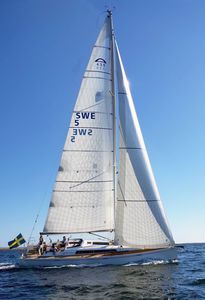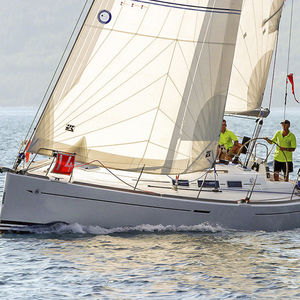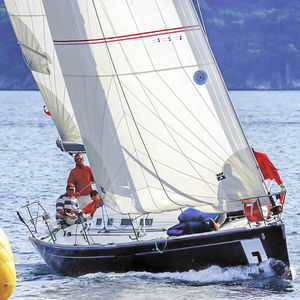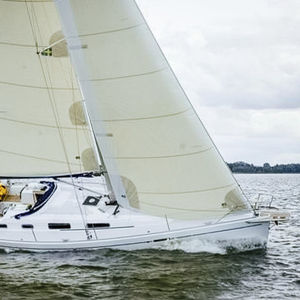
- Sailing
- Sailing Equipment and Gear
- Genoa
- UK-Halsey International
Genoa Titanium for cruising sailboatspolyester
Add to favorites
Compare this product
Characteristics
- Type
- genoa
- Applications
- for cruising sailboats
- Material
- polyester
Description
Titanium Double-Taffeta cruising sails are an attractive option compared to heavy, multi-ply Dacron or radially-paneled sails. Titanium Double-Taffeta sails are made with continuous loadpath yarns fused in between two layers of film. The exposed side of the film is covered with a finely woven polyester taffeta, creating a five-layer sandwich.
Titanium® sails are made with a grid of continuous carbon loadpath yarns running unbroken between the three corners of the sail; those yarns are laminated between two layers of 3D-shaped film. In the Titanium construction process, the yarns are laid dry–without glue–to reduce weight and to prevent the carbon yarns from becoming brittle. The mylar films are tacky on the inside from the copolymer coating; this holds the yarns and films in place until the final lamination has been completed.
The five layers (taffeta, film, loadpath yarns, second film layer, taffeta) are dropped into a custom-formed variable geometry thermo form in which the sail is heated and UV-bonded under vacuum pressure to become a one-piece finished membrane.
Not coating the yarns with glue makes for lighter (by 15-30%), more flexible, and more durable sails, which makes happier foredeck teams and happier owners who are not replacing their misshaped and broken sails as often.
Yes, there are seams in a Titanium sail, but they are there simply to shape the film layers. Unlike most high tech sails in which structural yarns only run the width of an individual panel, a Titanium sail’s continuous yarns eliminate seam loads, load-induced seam distortion, wrinkles, or worse yet, seam failure. Titanium sails are smooth and wrinkle free.
Catalogs
*Prices are pre-tax. They exclude delivery charges and customs duties and do not include additional charges for installation or activation options. Prices are indicative only and may vary by country, with changes to the cost of raw materials and exchange rates.











